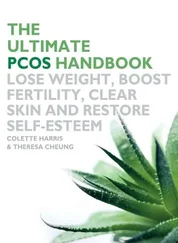And now, without further ado, welcome to the wonderful world of your dreams!
I NTRODUCTION: PREPARE TO DREAM
Once upon a time, I dreamt I was a butterfly, fluttering hither and thither, to all intents and purposes a butterfly. I was conscious only of my happiness as a butterfly, unaware that I was myself. Soon I awakened, and there I was, veritably myself again. Now I do not know whether I was then a man dreaming I was a butterfly, or whether I am now a butterfly dreaming I am a man.
– Chuang-Tzu
Every morning when you wake up and don’t recall any of your dreams – or dismiss the fleeting and surreal images that do surface in your mind as random nonsense – you miss an incredible opportunity for self-development. Hopefully, this book will help make dream amnesia a thing of the past and encourage you to treasure every one of your dreams as something sacred.
Treating dreams as sacred comes naturally to the Malaysian Senoi, a tribe noted by researchers for being completely free of depression and crime. The Senoi are believed to be such a happy and peaceful tribe because they use their dreams as tools for personal growth. From an early age Senoi children are encouraged to pay less attention to what is visible – the material world – and more to what is unseen – the world of the dream. Recording and discussing their dreams and using the insight of their night visions to guide their choices in waking life takes precedence over everything else.
The Senoi may be pointing us all in the right direction here. Many of us simply don’t pay enough attention to our dreams and miss out on a wealth of untapped wisdom. Research has shown that the more you recall and investigate your dreams, the better your creativity and problem-solving skills. Dreams may initially disorientate your logical mind because they typically don’t make any sense, but if you know how to interpret them even the oddest dreams can offer you priceless insights into your waking life. When analyzed effectively they are an incredibly rich source of guidance and healing, as well as the ideal catalysts for positive change and personal growth.
Why Do We Sleep?
Sleep is the balm for hurt minds, nature’s great second course.
– William Shakespeare
To better understand the nocturnal adventures of your mind it helps to know a little about the place where they all happen – the world of sleep. It is during sleep that we abandon conscious control over our body and mind and the unconscious or dreaming mind is allowed to roam free, giving rise to dreams.
We know that sleep is essential for our well-being but, like dreams, sleep remains a tantalizing mystery. It may surprise you to know that, to date, sleep researchers have not yet discovered the exact reason for sleep. For centuries it was thought that we needed to sleep to rest the body and mind, but this was disproved in the 1920s with the first electronic monitoring of the brain.
The brain gives off electrical impulses, and by attaching electrodes to various parts of the head scientists measure brain waves in a process known as electroencephalography. What these brain-wave readings (or ECGs) show is that both the body and the mind are active during sleep. So, if sleep doesn’t rest either your body or your mind, what is it for?
We don’t yet know for sure, but sleep researchers have uncovered some very intriguing things. It seems that when we fall asleep our brains act a little like computers that are offline. This means they are not idle but filing and updating. They do a system check on your body and release hormones to repair damaged tissues, stimulate growth, and fight infections. Sleep is therefore vital for the smooth running of many functions of your body and your brain, including memory, problem solving, and attention. Lack of sleep can lead to dementia, high blood pressure, heart disease, cancer, premature aging, weight gain, and lowered immunity. In short, sleep is essential, and we spend up to a third of our lives doing it. But despite all this we still aren’t entirely sure why we need it, and most doctors still don’t pay enough attention to the obvious importance of sleep for our physical and mental health.
However, the advent of space travel – of all things – has taught us a little more about sleep and why we need it. Scientists found that the prolonged periods of isolation and lack of external stimulation experienced by astronauts dramatically decreased their need for sleep. There is a sleep control center in our brains and when that gets overloaded with external stimuli we get tired. This explains why sometimes you nod off for no reason. Sleep is so crucial that your brain decides you have had quite enough stimulation and it’s time for you to switch off and recharge. If, however, there has not been enough stimuli from the outside world the sleep mechanism isn’t triggered, and you remain wide awake.
In other words, boredom, loneliness, routine, and the resulting lack of stimulation may account for episodes of insomnia. Although, paradoxically, it is worth noting that overstimulation has also been shown to trigger insomnia. Once again, whenever we edge closer to explaining the whats and whys of sleep, the plot thickens and the mystery remains.
The Stages of Sleep
Yet it is in our idleness, in our dreams, that the submerged truth sometimes comes to the top.
– Virginia Woolf
Perhaps the best way to learn more about sleep and why we need it is to understand what happens to our brains when we fall asleep.
Sleep researchers believe there are at least four stages of sleep, starting from when you begin to doze to when you lose conscious awareness and transform from a waking into a sleeping state. These stages are cyclic and repeat up to four or five times for every eight hours of sleep, each cycle lasting around 90 to 120 minutes. Here’s a brief, and by necessity, simplistic description of what typically happens when you go to bed at night.
During the first stage of sleep, when you lie down and close your eyes your body and mind relax. Heart and breathing rates slow down, blood pressure lowers, temperature drops, eyelids grow heavy, and eyes roll from side to side. During this stage you are semi-conscious and can easily awake. When people are sitting or traveling and they start to doze off, they struggle to keep their heads upright. This is stage one. It’s often called the hypnagogic state (the hypnopompic state is when you are just waking up) and it’s when you are most likely to experience hallucinations that float before your eyes.
In stage two, breathing and heart rate slow even further, eyes continue to roll, and you become more and more unaware of external stimuli or the noises from the outside world. It isn’t until the third and fourth stages of sleep, though, that you are finally sound asleep and it is harder to wake you up. You are now in a deep sleep state known as non-rapid eye movement (NREM) sleep.
In NREM sleep your brain is released from the demands of your conscious brain and it is rather difficult to wake you. This slow brain-wave sleep cycle typically lasts around 90 minutes. At the end of stage four you move back through stages three, two and one, at which point you enter a fifth stage of sleep called rapid eye movement or REM sleep. This is when things start to get really interesting and the dreams begin.
REM Sleep
One of the most adventurous things left us is to go to bed. For no one can lay a hand on our dreams.
– E. V. Lucas
REM sleep is defined by tiny twitches of facial muscles and slight movements of the hands. Blood pressure rises, breathing and heart rate become faster, the brain is fully active and eyes dart rapidly under closed eyelids as if you were looking at a moving object. If you are a man you may have an erection.
Читать дальше
![Theresa Cheung The Dream Dictionary from A to Z [Revised edition] обложка книги](/books/618735/theresa-cheung-the-dream-dictionary-from-a-to-z-r-cover.webp)





![Theresa Cheung - The Dream Dictionary from A to Z [Revised edition] - The Ultimate A–Z to Interpret the Secrets of Your Dreams](/books/692092/theresa-cheung-the-dream-dictionary-from-a-to-z-r-thumb.webp)





